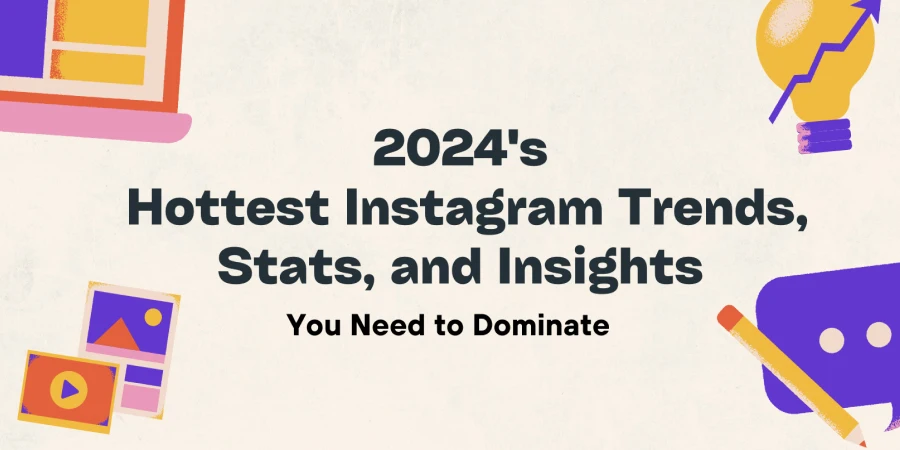An effective sales and marketing strategy is crucial for business success. Here’s why:
- Market visibility and brand awareness: It ensures your target audience knows about your products, increasing the likelihood of being considered when purchasing.
- Customer acquisition: Helps attract and acquire new customers.
- Customer retention: Sales and marketing are not only about acquiring new customers but also about retaining existing ones. Effective communication and engagement through marketing efforts help build customer loyalty, encourage repeat business, and foster long-term relationships.
- Competitive advantage: A well-crafted marketing strategy helps differentiate your business from competitors. It highlights your unique selling propositions and positions your brand in a way that resonates with your audience.
- Adaptation to market changes: A dynamic sales and marketing strategy enables businesses to adapt to changing market conditions. By staying informed about industry trends, consumer preferences, and technological advancements, businesses can adjust their approach to remain relevant and competitive.
- Customer insights: Marketing efforts provide valuable insights into customer behavior, preferences, and feedback. This information is instrumental in refining products, services, and overall business strategies to better meet customer needs.
This guide will provide you with all the resources you need to start building an effective sales and marketing strategy for your business.
Still in the beginning stages of starting your e-commerce business? Here are some tips on how to start an e-commerce business with no money. Looking for investors? Learn more about angel investor funding.
Table of Contents
Sales strategies
Marketing strategies
Analytics, measurement, and data
Sales strategies

Sales is a big topic and can feel daunting. So here, we will provide you with all the necessary resources to see your business succeed.
Considering how AI can help? Learn how to use ChatGPT for e-commerce.
Choosing which platform to sell on
When starting up a new e-commerce business, you must determine which platform you want to sell on. You could have your own website, such as through Shopify, or sell on an existing platform like Amazon or Etsy.
How to decide which platform is best for your business
When deciding which platform to sell products sourced from Alibaba.com on, an e-commerce business should consider the following factors:
- Target audience: Identify your target audience and the platforms where they are most active.
- Product type: If your products are unique, handmade, or have a distinct story, platforms like Etsy may be a good fit. For a broader range of products, consider Amazon or Shopify.
- Brand control: Consider how much control you want over your brand. Shopify allows for more customization and control, while Amazon may have stricter guidelines.
- Competition: Research the competition on each platform. Some niches may be saturated on one platform but less competitive on another.
- Fees and costs: Compare the fees associated with each platform. They all have different fee structures, so calculate how they impact your profit margins.
- Ease of use: Evaluate the ease of setting up and managing your store on each platform.
- Audience size: Consider the size of the audience each platform attracts. Amazon has a massive customer base, but Etsy may attract a more specific audience interested in handmade or unique items.
- Shipping and logistics: Consider whether the platform offers integrated shipping and fulfillment services. Amazon has FBA, while Shopify allows integration with various fulfillment services.
- Marketing and promotion: Assess each platform’s marketing and promotional tools.
- Long-term goals: Consider your long-term goals; for example, Shopify may be more scalable for building a brand, while Amazon can provide quick access to a large customer base.
- Return policy: Evaluate the return policies and processes on each platform.
Here are some articles to help you decide which platform may be best for your business:
Getting started on some e-commerce platforms
Learn how to get started selling on Etsy. And how to dropship on Etsy.
For selling on Shopify, here are some helpful resources:

For selling on Amazon, here are some helpful resources:
- 5 Tips for new Amazon seller accounts
- 6 Tips to help businesses rank higher on Amazon listings
- 10 Essential Amazon selling tips businesses need to know
- Comprehensive guide to using Amazon’s brand registry
- How to write excellent Amazon product descriptions and How to use ChatGPT to write product descriptions
- How to handle suspended Amazon accounts
- Essential Amazon seller KPIs to help measure and ensure success
- How to counter unauthorized Amazon product vendors
- 7 Simple Amazon pay-per-click (PPC) strategies to boost sales
- Guide to Amazon Ads Bidding
- How to win the Amazon Buy Box
- How Amazon Buy with Prime can boost your sales
- How to boost your profits with positive Amazon reviews
- Pros and cons of Amazon piggybacking
- 9 ChatGPT prompts to boost your Amazon sales
- Guide to selling beauty products on Amazon
Multi-channel vs. omni-channel retail
Multichannel and omnichannel retail are both excellent in their own right and work for businesses differently. Omnichannel is more customer-oriented and aimed at providing the best service, while multichannel is more product-oriented and aims to make sales and profit.
Learn more about each of these types of retail methods and the differences between them.
Also, consider headless e-commerce. Headless e-commerce refers to separating your online store’s front and back ends. This way, the key functionalities are divided into individual components that interact with each other through standardized interfaces, such as application programming interfaces (APIs).
Market analysis
The market available to a business or product varies depending on geography, output capability, marketing budget, and other business concerns. Thus, when considering starting a business or setting up a business plan, working out different possible market shares is essential. These include realistic market sizes for a new company and the potential market size for future growth.
You can determine if it is worth starting the company by using TAM, SAM, and SOM. Learn what these are and how to calculate them here.
Choosing which products to sell
Embarking on launching a new e-commerce business involves a pivotal decision: choosing the right products to sell. This initial step requires a delicate balance of market research, passion, and strategic thinking.
Here are 10 free ways to find hot products to sell online.
How to set retail prices

Innovative pricing leads to greater customer retention and greater profits. There are 3 common pricing strategies: markup pricing, competitive pricing, and penetration pricing. Learn more about these pricing strategies and how to implement them.
However, these aren’t the only pricing strategies. One such strategy is psychological pricing. This taps into the emotions of the consumer.
The concept behind it is to make the consumer feel as though they are getting the best deal possible for the product they’re buying. The focus of e-commerce cannot be on product appreciation because it requires physical contact with an item; therefore, focusing on emotional connection can be a way to tackle this problem.
Psychological pricing does just that. It makes the consumer desire a product based on price, and the way in which it is priced can aid in the decision-making of whether or not the consumer will buy it. Learn more about psychological pricing strategies for e-commerce.
Looking for maximum profit? Here are the specific pricing strategies that can help.
Another way of thinking about pricing strategies is through customer surplus. Learn what it is and how it’s calculated.
What about discounts? Here is everything you need to know about discount pricing strategies.
Selling on social media

As traditional boundaries between online retail and social networking blur, many e-commerce brands leverage the immense reach and connectivity offered by platforms such as Facebook, Instagram, Twitter, and more. This relationship allows brands to showcase their products to a global audience, directly engage with consumers, foster brand loyalty, and create a seamless shopping experience.
Here is some information on getting started with selling on social media:
- How to sell on Facebook Live
- How to dropship on Facebook Marketplace
- How to boost your business with the 8 latest social commerce trends
How to take quality product photos

Using high-quality images for your online promotion is a no-brainer. Websites with product photography receive 94% more views than those without.
Today, taking a product photo that will multiply sales for online stores does not have to be expensive if you know what you are doing (you can even use your phone!)
Learn more about the different types of e-commerce product photography that your business can use. And here are some tips on taking product photos yourself.
How to write quality product descriptions
A product description offers an overall definition of a product and how it is used to give consumers all the information they need to be convinced to buy a product. This is why product descriptions are a key part of any retailer’s conversion and marketing funnel.
Learn how to write high-quality product descriptions that appeal to customers and are suitable for SEO. You can also use AI to help; here is some information on using ChatGPT to support writing product descriptions.
Here are some specific tips on writing product descriptions for selling on Amazon.
How to upsell and cross sell
Upselling is a sales strategy where a business encourages customers to purchase a more expensive or upgraded version of the product they are already considering or have in their cart. The goal is to increase the overall transaction value by convincing the customer to buy a higher-end or additional product.
Cross-selling is a sales technique where a business suggests related or complementary products to customers based on their current purchases or interests. The aim is to encourage customers to add more items to their shopping cart that enhance or supplement the primary product they are considering.
Learn more about upselling and cross-selling as e-commerce selling strategies.
How to differentiate yourself from the competition
The online marketplace is full of successful e-commerce brands that sell similar products, and this is because one can’t stop new stores from opening up and selling similar items. However, it is possible to manage e-commerce competition by using store and service differentiation to stand out.
Here are 6 ways to ensure your e-commerce store is unique.
Importance of customer reviews

Good reviews are essential for businesses to get customers to buy their products and services. That’s not surprising, considering many customers will likely spend 31 percent more on a business with great reviews.
Here are 10 simple steps that can help businesses get better online reviews. Also, here is some further advice on how to boost your profits with positive Amazon reviews.
Sales optimization
Sales optimization is analyzing and adjusting aspects of the sales process to enhance and maximize a business’s performance, efficiency, and effectiveness. A successful optimization process should increase revenue, conversions, and growth.
Marketing strategies
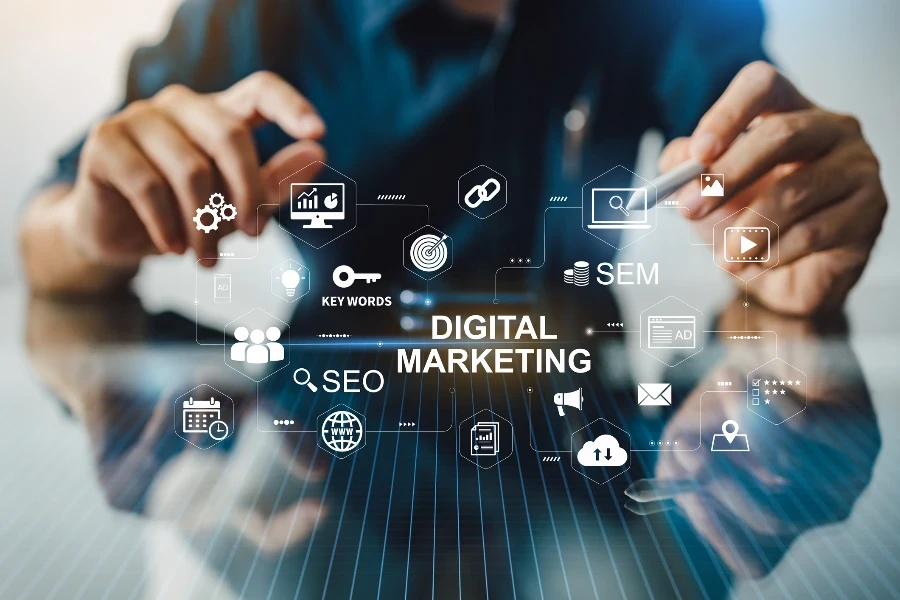
For a business to succeed, it must have a well-defined marketing strategy. A marketing strategy is a business plan for reaching and connecting with prospective customers and converting them into your product buyers to drive profitability.
One way of approaching marketing is customer lifestyle marketing. This strategic approach focuses on creating personalized and targeted messaging for customers at every stage of their relationship with your business. Learn about customer lifestyle marketing and each stage of the buying cycle here, and keep this in mind as you learn about the different marketing strategies below.
In the following sections, we will discuss the multiple types of inbound marketing. Inbound marketing is a strategy focused on attracting customers through relevant and helpful content tailored to their needs and interests.
If you’re a B2C business, you may have heard of content “going viral” or the term “viral marketing.” Viral marketing is a powerful marketing strategy that involves creating content that spreads rapidly and organically through different channels. It differs from traditional marketing, which relies on direct promotion and paid advertising.
Learn more about viral marketing and the key elements of crafting contagious content.
Before we go into the different inbound marketing strategies, you should know a few things first.
What you need to know before you build your marketing strategy
An effective marketing strategy helps use resources best and sets the right objectives with associated ROI metrics and measures against them.
Step 1: Identify value propositions
A value proposition explains why a customer should select your product or service over others. It highlights the most obvious benefit customers gain from doing business with you.
Step 2: Set marketing objectives
Marketing objectives provide key metrics for what success looks like. There are two categories of marketing objectives: brand awareness and sales growth.
Step 3: Understand the target audience
The first question to the target markets imposed is: who and where they are.
Step 4: Analyze the market size and competitors
Understanding your target market size tells you how much potential business is out there and the value you can bring back to your business. Learn more about how to analyze the market size in this marketing guide.
Several tools can help you with marketing; here are your must-know e-commerce marketing tools.
Developing and tracking a marketing budget
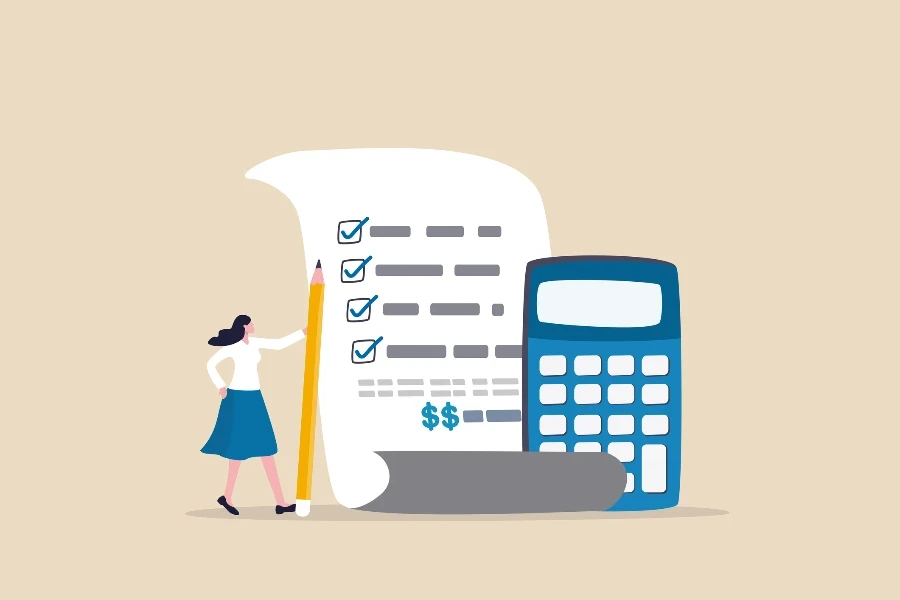
A marketing budget estimates a business’s expenses for promoting its products and services or raising brand awareness. It is comprehensive, covering all the costs of short- and long-term projects.
A marketing budget is crucial for businesses of all sizes. If your campaigns aren’t properly funded or your marketing expenditure doesn’t match your earnings, your business might sustain low staffing, a lack of resources, and insufficient reach.
Learn more about developing and tracking your marketing budget.
Building a brand
Brands, their aesthetic, values, and voice make businesses recognizable across the globe, and subsequently, they are the reason that a business can lock in customers no matter the location.
Brand building has many aspects; here are 7 simple steps to help you build your brand. And some additional tips on how to establish strong brand positioning in your market.
Introduction to the marketing funnel
Every business person has heard of a marketing funnel, purchase funnel, or sales funnel, and for good reason. They clearly introduce the core steps a store, and its customers will go through, from initial interest in a product to final purchase. They are a tried and tested way for store owners to understand their consumers’ behavior, allowing them to use this information to maximize their chances of making a sale.
By understanding what a consumer is likely to do next—check reviews or competitors, for example—a business can take steps to display their product in the best light and close a sale.
Learn some practical tips for using a marketing funnel in your business and how to effectively manage a sales pipeline.
Want to know more? Here’s how to 3x your ROI with a marketing funnel.
Social media marketing
Social media has become an integral part of the commercial industry due to its massive impact on consumers’ lifestyle choices. Several big and small companies have discovered the benefits of promoting their products and services online and have thus integrated social media into their marketing strategies.
How to improve social media engagement
According to Techjury, more than 4 billion people are active social media users. Businesses that actively engage with their customers on social media build strong relationships, which can lead to increased customer loyalty. It can translate to higher conversion rates as consumers are more likely to purchase from a brand they are engaged with on social media.
Additionally, social media algorithms perceive content with high engagement as exciting and entertaining and suggest it to more users. Thus, brands with higher social media engagement have great chances of reaching a wider audience, which can improve brand awareness.
Finally, social media engagement enables brands to get valuable consumer feedback, which will help them improve their products, services, and marketing strategies.
Here are 5 proven ways sellers can increase social media engagement.
Video has become incredibly popular on many social media channels; learn how to boost sales through video marketing.
Next, we will provide some resources for marketing on specific social media platforms.
10 Facebook trends that boost business growth
Facebook Ads vs. Google Ads: Combine them to boost sales
How to increase brand awareness on Instagram
Instagram marketing trends in 2023
TikTok
10 ways to create a successful TikTok marketing strategy
Using TikTok to boost your business
Everything you need to know about Pinterest marketing
Blogging as marketing
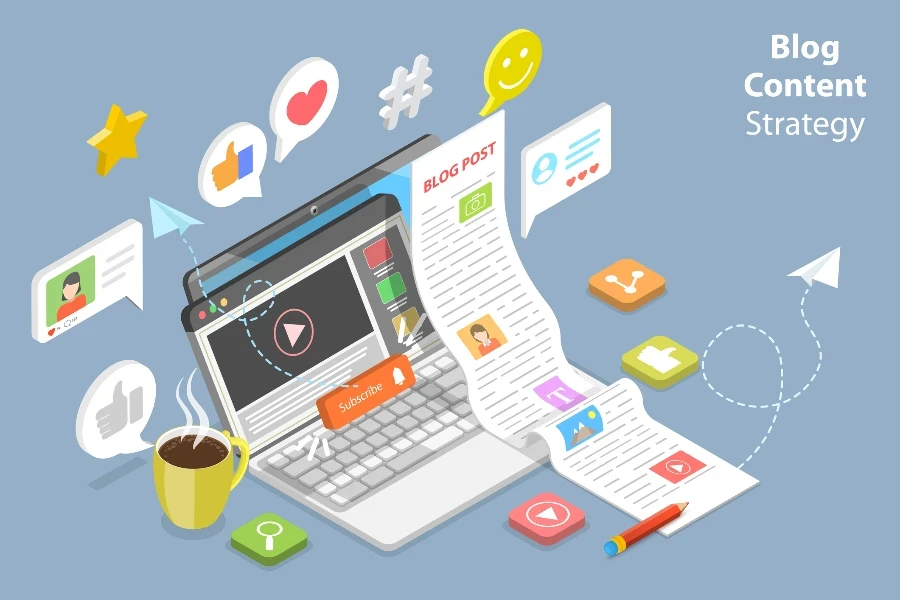
While marketing strategies constantly change, one thing that has remained consistent is the benefit of blogging. Not only does having a business blog help drive website traffic through SEO, but it also helps establish your brand and build trust with potential customers. Not convinced? Here are 7 reasons your business needs a blog.
But then what? There are so many steps involved in running a blog. Here is everything you need to know about starting a blog and the following steps:
- 6 ways to boost engagement on your blog
- How to avoid common blogging mistakes
- How to create a blog content calendar
- How to generate new blog ideas
- How to write quality blog content
- How to optimize blogs for SEO
- Blog promotion 101
- Email marketing for blog promotion
A great strategy to implement in blog writing is storytelling. Storytelling techniques can help a business gain a competitive advantage and boost revenue by offering a distinctive, memorable, and positive consumer experience. But storytelling isn’t limited to blogs; there are many ways to use storytelling in sales and marketing that can benefit your business. Learn more about storytelling.
Email marketing
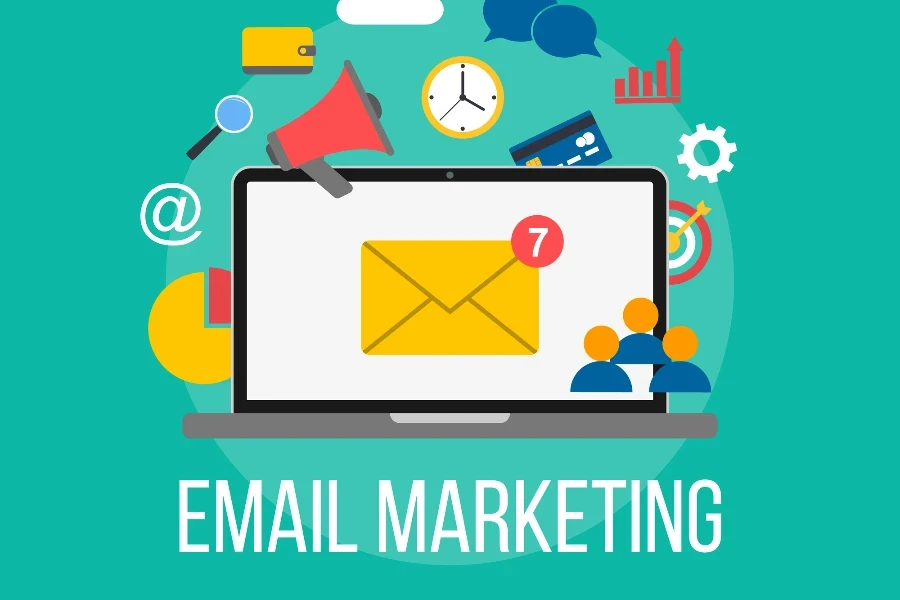
Email marketing is a digital marketing strategy that involves sending emails to a group of people to promote products and services or build relationships with customers. It’s a direct and cost-effective way for businesses to communicate with their audience.
Potential customers can opt-in to receive emails, making email marketing an effective way to connect with them directly without being impacted by external factors such as social media algorithms.
Learn more about email marketing. And here are the 10 best email marketing platforms.
Learn more about customer segmentation.
Influencer marketing
Brands already know influencer marketing is the future of marketing because it’s effective. After all, influencers are authorities in their field or niche. Only 33% of customers trust traditional ads, but over half rely on influencer recommendations when purchasing. The Digital Marketing Institute reports that 60% of consumers would consider buying an influencer-promoted product in-store and that 40% have actually purchased a product after seeing an influencer use it on social media.
Tools to help find the best influencer for your business
Searching through social media organically to find an influencer is challenging, even if using keyword-specific hashtags. So, here are some tools that might help:
- Onalytica provides influencer marketing software and helps brands scale their influencer programs. It helps brands get answers to important questions they’re asking about influencer marketing, such as: who are my relevant influencers, how do I engage them and build relationships, what influencer-generated content can I create, and how do I measure success and ROI?
- Meltwater helps marketing teams monitor media coverage across news and social media and enhance brand management by better understanding their target audience. Meltwater also helps brands find the best influencers and has additional tools that can help build an influencer marketing strategy, manage campaigns, and track ROI.
- Sparktoro crawls tens of millions of social and web profiles to find what (and who) your audience reads, listens to, watches, follows, shares, and talks about. Sparktoro helps brands find their audience’s true sources of influence so they can be used to influence their marketing efforts.
- Rival IQ offers social media marketing analytics with advanced competitive analysis, SEO, social reporting, and content marketing tools.
Once you have a short list of influencers, it’s time to prepare an outreach message to determine if it’s a good fit. First, consider the promotion strategy you’d like to use so you can let the influencer know in your message the type of relationship and content you are seeking, then customize your messaging to that particular influencer and ask them questions to determine if it’s the best fit.
Want to learn more about choosing the right influencers and how to reach out to them? Here are 4 tips for choosing the right influencers for your brand.
Reactive marketing
Reactive marketing is an excellent customer engagement strategy to amplify the power of social media and generate interest in a brand or product.
While traditional marketing has long relied on campaigns and planned strategies to reach consumers, reactive marketing is about engaging with people at any moment. It’s a customer-centric approach that responds to real-time events, news, and even TV shows.
The idea behind reactive marketing is to identify what people are talking about and then jump in with creative advertisement angles highlighting the brand and its products.
Remarketing
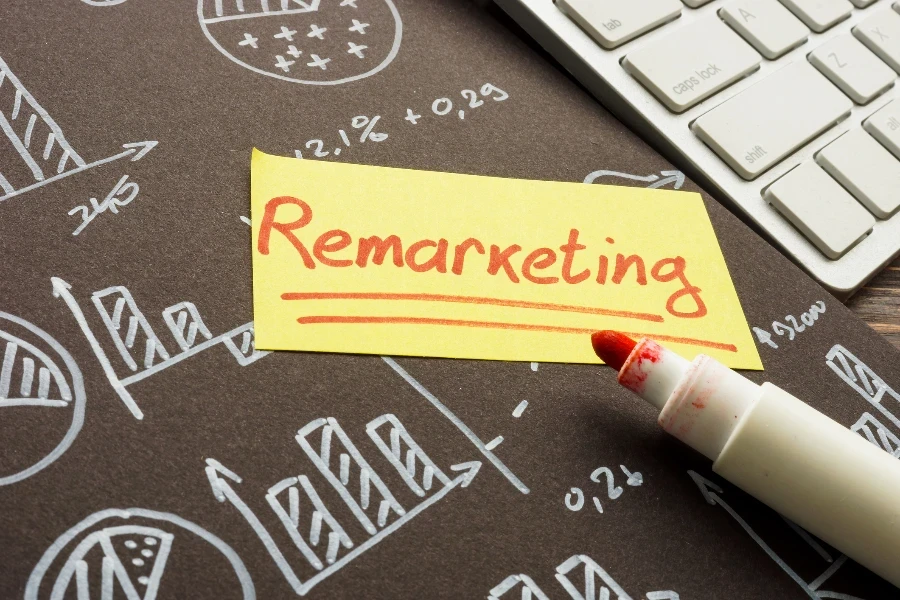
Remarketing, also known as retargeting, is a digital marketing strategy that involves targeting and re-engaging users who have previously interacted with a website, app, or online content. The primary objective of remarketing is to reconnect with visitors who did not take a desired action during their initial interaction, such as making a purchase or filling out a form.
One example of remarketing includes reaching out for an abandoned cart; this can be done through SMS or email. However, email can be used for remarketing in many ways, not just to respond to an abandoned cart. Learn more about email remarketing.
Digital advertising basics
Digital advertising is a subset of digital marketing specifically focused on paid promotional efforts through online channels. It involves creating and placing advertisements using digital platforms like social media, search engines, websites, and other online spaces.
Digital advertising may take various forms, including display ads, search engine ads (pay-per-click or PPC), social media ads, video ads, and more.
The primary objective of digital advertising is to reach a targeted audience and drive specific actions, such as clicks, conversions, or brand visibility, by investing in paid placements.
Analytics, measurement, and data

In today’s business landscape, data has become an asset. Companies have discovered that having a clear data monetization strategy is critical to gaining a competitive advantage and boosting revenue! That said, success with data monetization requires careful planning and implementation.
Data monetization is the process of quantifying company data and giving it monetary value. By collecting and analyzing data effectively, companies can uncover insights and opportunities to turn data into new products and services that customers want. Data monetization strategies can help transform businesses’ data into valuable assets, thus generating income and driving growth.
Here are 5 steps to integrating data monetization strategies to boost revenue.
Reduce bounce rate for online stores
When looking at analytics, one important thing to measure is bounce rate. The e-commerce bounce rate is a metric measuring the percentage of visitors who enter an e-commerce website and then leave without interacting further or navigating to any other page within the site.
It’s a significant indicator of user engagement and the effectiveness of a website’s design, content, and overall user experience. Here are 4 strategies to reduce bounce rate for online stores.
Use customer data integration
Customer data integration (CDI) collects, consolidates, defines, and manages customer data from various sources across and within an organization’s departments to view each customer accurately.
Businesses use CDI to deliver personalized experiences and targeted marketing campaigns that relate to individuals based on their needs, styles, and preferences. Learn more about the benefits of data integration and how you can make it work for your business.
SWOT analysis
A SWOT analysis is a strategic planning tool businesses use to assess and understand their internal Strengths and Weaknesses as well as external Opportunities and Threats.
A good SWOT analysis examines the internal and external factors that can impact a business, creating a holistic view of the scope of its operations. By doing so, retailers can discover key points of leverage and pinpoint the uncontrollable risks the business faces.
Learn how and when your business should conduct a SWOT analysis and what actionable steps to take after the analysis.
Boston Consulting Group (BCG) growth-share matrix
Businesses need regular product line assessments to know which products generate the most sales, which create losses, and which parts of their business require improvements.
A proper product assessment can help the average business optimize its strategy and boost profits. And that’s precisely where the Boston Consulting Group growth-share matrix comes in. No doubt, other tools and practices are available, but the BCG matrix offers a simple approach that is ideal for identifying and then leveraging a business’s strong points.
Here is everything you need to know about the BCG growth share matrix, including how to create one for your business.




